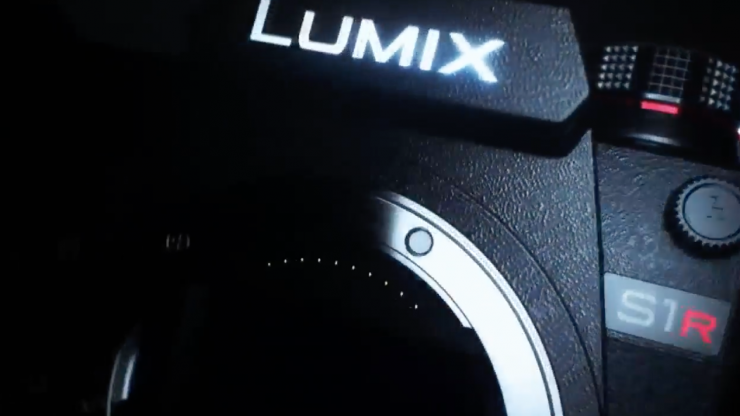
With Panasonic unveiling their first ever full frame mirrorless cameras, the S1 and S1R, the question needs to be asked, will they knock Sony off the throne and take the crown to become the new king of full-frame mirrorless cameras? Now I’m strictly speaking about video functionality and not their performance as a hybrid camera.
Given that Panasonic’s announcement was more of a “Look what we are making” than an actual product launch, there is still a lot of unknowns. With the S1 and S1R not scheduled to be available till sometime in 2019, and no specifications set to be announced until the start of 2019, Panasonic could be leaving the door wide open for another manufacturer to sweep in and release another camera (I think we all know I am talking about Sony).
What we do know (and it ain’t much)
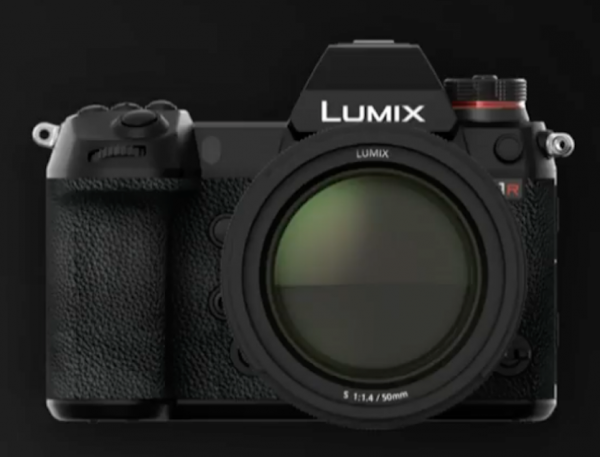
Panasonic announced two cameras yesterday, the first was the S1, an entry-level model, and the second was the S1R, a pro version with a 47 MP sensor. Panasonic has clearly stated that both cameras have primarily been designed with photographers in mind and that they expect most video shooters to pick the S1 over the S1R.
A far as specifications go, we know very little:
SR1
– 47 MP
– L-mount
– Uses a Panasonic designed and manufactured sensor
– Dual I.S. (both lens and body)
– Dual card slot (one XQD, one SD)
– 4k 60p
S1
– 24 megapixels
– L-mount
– Panasonic designed and manufactured sensor
– 4k60p
– Dual I.S. (both lens and body)
– Dual card slot (one XQD, one SD)
Does announcing a camera so far in advance of its release help or hinder Panasonic?
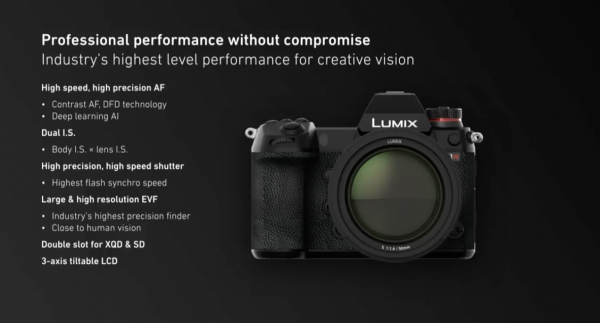
Panasonic did a similar thing with the GH5 and also the EVA1. Show a camera, create some mystery, and then slowly release specifications and information over many months. While this does create a certain shroud of mystery and provide plenty of initial hype, it’s a dangerous strategy in some regards. The more you hype up a camera, the more expectations the end user has. This was very evident with the EVA-1 where the hype surrounding the camera was so great that shooters were suddenly expecting it to be better than it actually was.
Look, I get it. Panasonic is a business and they have a large marketing department and they want to attract as much attention and get as much coverage as possible. For all intensive purposes, the S1 and S1R are still very much vaporware in a lot of ways. With at least 3-4 months minimum before the camera is even released, there is still obviously a lot of work Panasonic still needs to do. It is still very likely that a lot of the final specifications are far from complete and Panasonic engineers are probably still working on what will and won’t be possible. And that brings me to the next topic, video specifications.
4K 60p 10-bit 4:2:2 internal recording?

The GH5 and GH5s have a lot of great video features, most notably 10-bit 4:2:2 internal recording. What you need to remember is that the GH5 and GH5s use much smaller M4/3 sized sensors than the full frame sensors that will be in the S1 and S1R. Putting 10-bit 4:2:2 internal recording in a camera with an M4/3 sized sensor is a far easier proposition than doing it with a full frame sensor. If you look at all of the mirrorless full-frame cameras that are currently available, not a single one is capable of 10-bit 4:2:2 internal recording. We all like to think that this is a manufacturers way of holding back features and protecting their product line up, but in reality, I think it is more to do with technical limitations. I’m not saying that protecting your product line up isn’t part of the problem, but I think the technical limitations of recording 4K on full frame sensors are still a big issue for manufacturers. Nikon doesn’t make digital cinema cameras so they didn’t have any reason to not include 10-bit 4:2:2 internal recording on their Z6 and Z7 cameras, but they did.
Shooting 4K on a full frame sensor creates a lot of heat and that heat needs to be dispersed. Digital cinema cameras have fans and internal cooling systems for this very reason. Small, mirrorless cameras are weather sealed and don’t have any fans or internal cooling systems. Without any way of dispersing the heat, they face severe technical limitations, especially with trying to record 4K in 4:2:2 10-bit. Could Panasonic have solved this problem? Who knows. Without seeing or knowing any specifications of the S1 or S1R it’s impossible to answer. You have to remember that Panasonic has been deeply invested in M4/3, so moving up to a full frame sensor is new territory for them. It could very well be the case that the video specifications that are found in the GH5 and GH5s don’t find their way into the S1 and S1R.
We would all love to see 4K 60p in 4:2:2 10-bit internal recording on these cameras, but I’m still sceptical whether we will. For all we know, the 4K 60p may not be possible without doing a sensor crop, especially on the 47MP S1R. The GH5s has a sensor readout of 1:1, because the sensor is only 10.2MP. To do a 1:1 readout on from the S1R’s 47MP sensor would require a larger than 2x crop. This is why I think it is highly unlikely the S1R can do 4K 60 without a massive crop. 4K at up to 30p should be possible at close to a 1:1 readout on the S1R. Maybe 4K 60p is possible on a full-width readout of the sensor on the S1, we will have to see. All Panasonic have said is the S1 and S1R offer the World’s first 4K 60p/50p video recording in a full-frame Digital Single Lens Mirrorless camera. This doesn’t mean that it will be possible without a sensor crop. Hopefully, it will be, but until early 2019 we won’t know.
The other problem may be that Panasonic wants to protect their EVA-1 and cripples the video features of the S1 and S1R. The GH5 and GH5s were not direct competitors to the EVA1 due to the M4/3 sized sensor, but the S1 and S1R may be. Again, I think Panasonic has given us enough hope from past experience that the video features won’t be held back on a camera just because it’s a hybrid and not a digital cinema camera.
I really hope we do see 4K 60p in 4:2:2 10-bit internal recording, heck even 4K at up to 30p in 4:2:2 10-bit would be nice. This would certainly set the S1 and S1R apart from their competition. If Panasonic manages to do this, they will set a new benchmark which others will have to follow.
The L mount
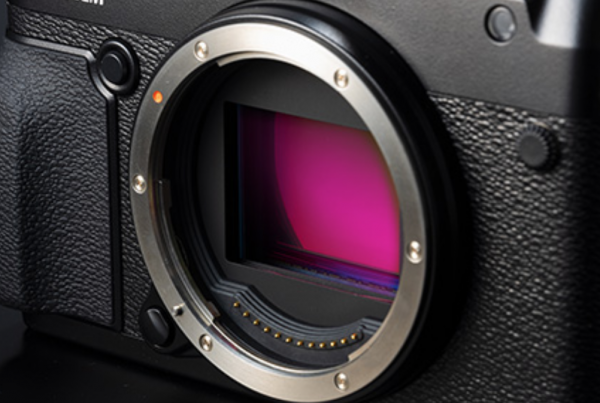
Leica has had a long relationship with Panasonic, so it’s no surprise that they have leveraged Leica’s L mount for use on their new cameras. The mount is the same mount that can be found on Leica’s SL cameras.
For use on the widest possible variety of products, the diameter of the L-mount is 51.6 millimetres, making it suitable not only for full-frame cameras but also for APS-C sensors. The small footprint of only 20 millimetres allows for a small distance between optics and sensor. This enables companies to make much more compact lenses. The standardized L-Mount contact allows for communication between the electronic components in the lens and the camera, making it possible for lenses to be updated through firmware releases.
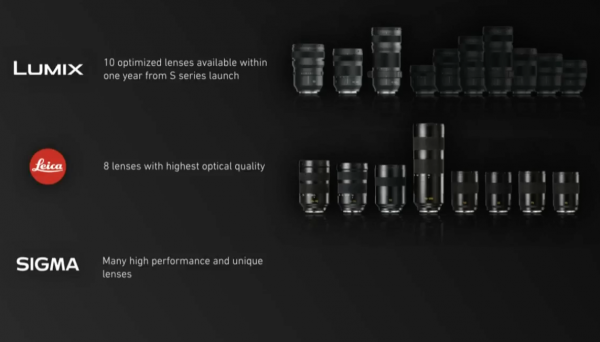
The trouble with going with the L mount is that there is a very limited number of lenses available. Panasonic has announced they are making three L mount lenses, and that a total of 10 will be available by 2020. The only other native lenses available in L mount are made by Leica and they range in price from $4,700 USD all the way up to $6,395 USD. I am sure Sigma will make a lot of their own lenses available in L mount, but just when that may happen is unknown. From what I understand Sigma is working on their own L mount full frame camera, so they may not introduce their lenses in L mount until that arrives.
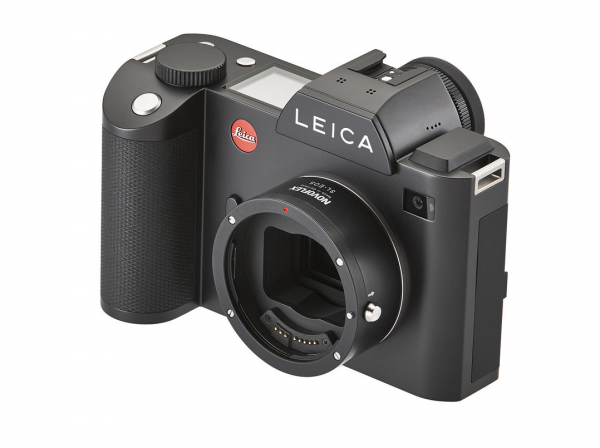
I am almost certain that Panasonic will make their own lens adapters available so that other glass will be able to be used on the L mount, but they are yet to confirm this. Leica does make a range of adapters for using other glass on their SL camera, but the adapters are “Leica priced”. Novoflex also makes some adapters including a Canon EF Lens to Leica L-Mount Camera Electronic Adapter, but that costs $654.49 USD. They also make a PL to L mount adapter for $569.99 USD.
Could we see the L mount being used on Panasonic’s digital cinema cameras in the future? Quite possibly, well at least at the lower end. The EVA-2 would be a prime candidate for the L mount as it would allow for a lot more lenses to be used (presuming adaptors are made available) than using the EVA-1’s Canon EF mount.
No flip LCD screen like the GH5
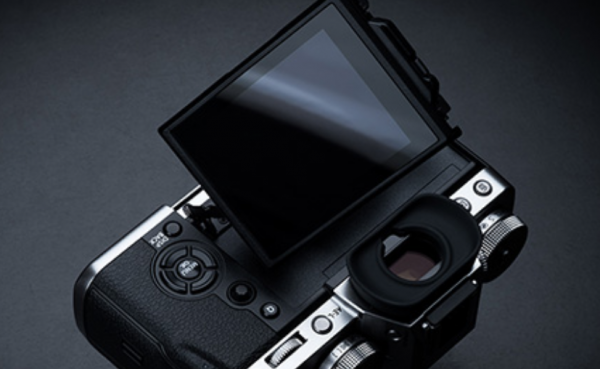
I know people are bound to complain about this, so I will mention it. The S1 and the S1R don’t have the same type of flip around LCD screen as the GH5 or GH5s. Instead, the S1 and S1R utilize what’s called a 3-axis tilt screen. This is exactly the same sort of mechanism that can be found on the Fujifilm XT-3. The screen on the S1 and S1R can go out, up and down and move to the side, but not flip around towards the front.
Now personally this doesn’t bother me one single bit, but I’m sure Vloggers are going to hate it. The thing is not everyone is a Vlogger and needs to flip a screen out and shoot themselves. If you are a Vlogger there are better cameras for your needs. Pick one with great autofocus performance, because honestly, that’s the most important feature if you are shooting yourself. Dare I say it, but the Canon EOS R would make for a far better Vlogging camera than the S1 or S1R. And no, you don’t need to shoot Vlogs in 4K!
Dual I.S.
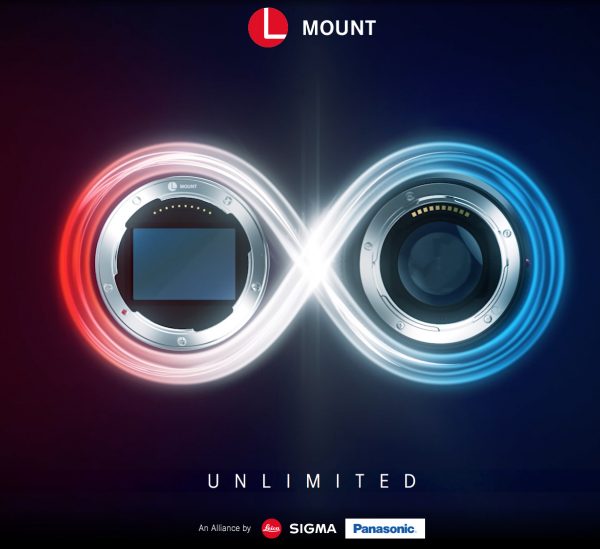
The S1 and S1R both will feature in-camera sensor stabilization just like the Nikon Z6/Z7 and Sony a7 III. The cameras will also talk to the lens and communicate the best way to provide image stabilization. This is exactly the same thing that happens in the GH5 and GH5s, and it works really well. Dual I.S. is really good when shooting handheld video. It’s unclear whether any of the L mount lenses Panasonic announced will feature I.S., but I’m presuming they will, well at least some of them.
No phase detect autofocus
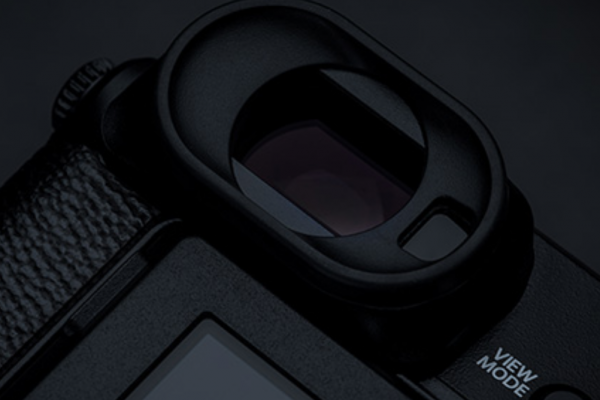
The S1 and S1R utilize contrast only autofocus and not phase detect autofocus. Let’s face it, Panasonic’s GH5 and GH5s don’t exactly have the best autofocus systems on the market. A big question mark still hangs over the S1 and S1R’s autofocus performance.
Converting your M4/3 customers
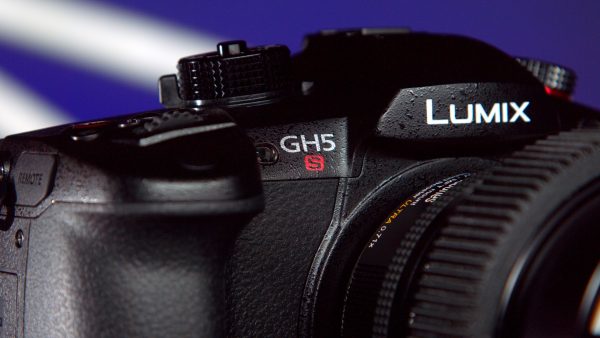
Here is where it gets tricky. If you want to get your existing GH5/GH5s users to upgrade to the S1 or S1R it’s going to be a tough sell. The biggest problem will be when it comes to lenses. Most GH5 and GH5s uses have heavily invested in native M4/3 glass. They have done this because in general the lenses are smaller and a lot more affordable than APS-C or full frame glass.
I’m pretty sure Panasonic will include some sort of crop mode on the S1 and S1R, but whether that will include the ability to use M4/3 lenses is unknown. You would certainly think that it would be in their best interests if they did.
Panasonic in some ways has backed themselves into a corner by sticking with M4/3 for so long. Yes, it allowed them to make cheaper cameras and lenses and also enable 4:2:2 10-bit internal recording, but now your existing user base has to buy a new camera body and lenses and spend significantly more money.
We have no idea how much the S1 and S1R will cost. It is very likely that they will be on par with what is available from Sony, Nikon, and Canon. If you are a GH5 or GH5s owner the S1 and S1R may be priced out of your reach. If you factor in the cost of having to buy new batteries, new media, and new lenses, it’s not going to be a cheap proposition.
What is the future of M4/3?
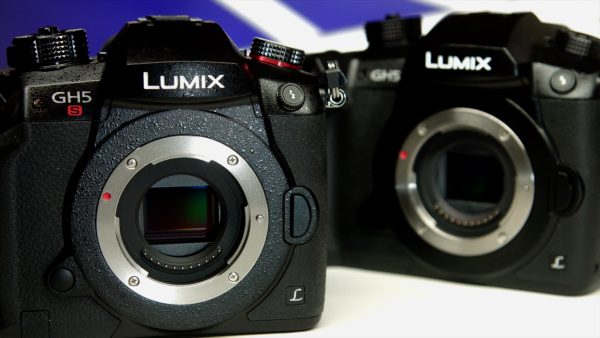
I certainly don’t think that Panasonic will be abandoning M4/3 altogether. They have created a nice niche market for themselves in this space with very little competition. Sure M4/3 has its limitations and most shooters want to use at least a Super35mm sized sensor, but there is still a place for it. If you are starting off in the business, the affordability of both M4/3 cameras and lenses is an attractive combination.
Even with this shift towards full-frame, I don’t think Panasonic will be looking to leave the M4/3 sector behind. The GH5 and GH5s have proven to be very popular cameras due to their feature set and price. I fully expect Panasonic to keep developing M4/3 sized cameras and lenses at least for the next few years.
Will medium format mirrorless cameras be the next big thing?
Up until now, medium format mirrorless cameras have had horrible video functionality, but that is starting to change. Fujifilm is developing the GFX 100, a 102 million pixels image sensor that is approximately 1.7 times the size of a full-size 35mm image sensor. This camera will be the first medium format mirrorless digital camera in the world to incorporate phase detection pixels throughout the entire sensor (coverage ratio of 100%,) allowing for high-speed/high-precision autofocus wherever in the frame subject is located. This mechanism makes it possible to use autofocus to track moving objects, which was difficult with the traditional system of contrast autofocus, resulting in more precise continuous autofocus.
The GFX 100’s newly developed image sensor with high-speed readout capability and the X-Processor 4 high-speed image processing engine will allow for shooting 4K 30p 10-bit on a medium format mirrorless digital camera. A medium format sensor, larger than the sensors generally used in high-end cinema cameras, creates greater depth of field for shallow-field subjects, improves reproducibility across a wide range of color tones, and provides superior sensitivity.
These cameras are still going to be expensive, but as the technology improves medium format mirrorless could very well become what full frame is today. Imagine in a few years being able to shoot medium format video in 4K in 10-bit for the same price as what a Sony a7 series camera costs you today.
Mirrorless competition has never been fiercer
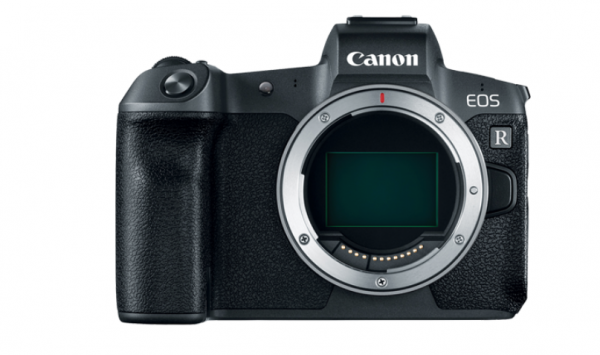
With Sony, Canon, Nikon and now Panasonic all making full frame mirrorless cameras, the competition for manufacturers has become very intense. As we know, specifications are just part of a much bigger picture. To win over customers it’s all about lenses, ergonomics, and price. Yes, specifications (especially video) are a big part of the consideration but they don’t always equate to making one camera better than another. Panasonic, just like Canon and Nikon is very late to the full frame mirrorless party. Sony has a 5-year head start on everyone else and that has given them a big advantage. It has also made them lazy. Sony has been able to drip feed out features over various models without having any real competition. Now they do have competition and they need to step up to maintain their stranglehold on the full frame mirrorless market. With all these new players now emerging, it could very well be the case that Sony had to go back to the drawing board with the rumored a7S III.
Does the s1 and S1R hint at a full frame Panasonic digital cinema camera?
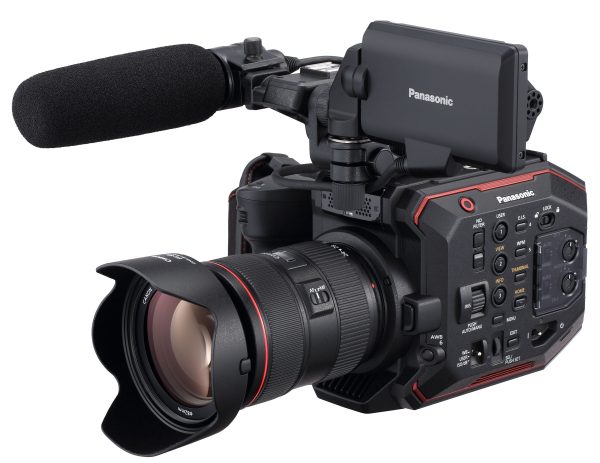
This is another question that is bound to get asked. With the announcement of the S1 and S1R, will we see a full frame digital cinema camera next year from Panasonic? Well, your guess is as good as mine. In the high-end digital cinema space, ARRI, RED, Sony and Canon all have full frame options, Panasonic is the only major player that doesn’t. Maybe I should mention Blackmagic Design here as well, but they don’t make a high-end digital cinema camera.
In my opinion, I think a Varicam 35 full-frame version will appear before we ever see a full frame EVA-2. That’s not to say a full frame EVA-2 won’t happen, but I believe Sony will be the first company to push a more affordable full-frame digital cinema camera.
Lumix Pro
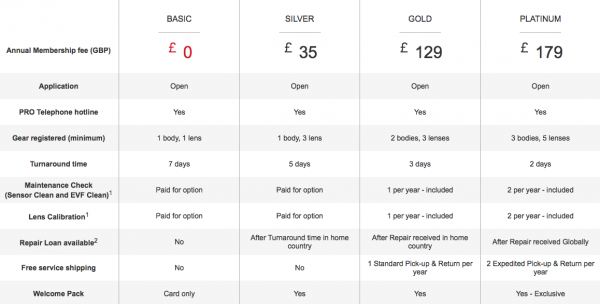
Panasonic also launched Lumix Pro along with the cameras, which is essentially the same sort of Pro service that Nikon, Canon, and Sony have had for years. Now how this works is if you should you have any issues with your equipment Panasonic can get you up and working again as quickly as possible. By using an international network of service facilities any downtime is minimized.
Now, this isn’t a free service (unless you choose the Basic membership), you have to sign up and pay an annual fee. Lumix Pro is made up of 4 different levels: Basic, Silver, Gold, and Platinum. When you register, you will be asked to fill in your personal information and information about the equipment you own. Panasonic then uses this information to validate your membership when you are booking a service as only equipment that is registered within your profile will be eligible for maintenance and repair benefits.
So will the Panasonic S1 and S1R ascend to the throne of full-frame mirrorless cameras?
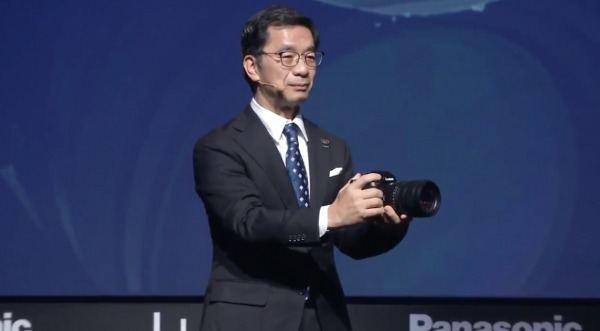
There are still far too many unknowns to say yes. With a lack of specifications and no vision available from the camera, Panasonic now needs to live up to the hype they have created. Just how much of the GH5 and GH5s’ video pedigree the S1 and S1R will have will probably determine their fate. Panasonic is clearly stating that these cameras are photographic tools first and foremost. They have also said that the S1 will be more suitable for video than the S1R which leads me to believe that the S1 may have better video features than its big brother.
Panasonic has a real chance to push the envelope with the S1 and S1R and let’s hope they do. Competition is good for everyone, and hopefully, with such fierce competition in the full frame mirrorless space, it will continue to push manufacturers into giving us the features we all want.
We have absolutely no idea how much the S1 and S1R are going to cost. They really do need to be competitively priced against their direct competition. Panasonic needs to be aggressive with pricing to win over a lot of existing Sony full frame users.
Can the S1 and S1R redefine what we should expect in a full frame mirrorless camera? Well, we are going to have to wait and see. While there are not a lot of details to go on, there really wasn’t anything big that I have seen that sets these cameras apart from the competition, yet. I’m sure the S1 will have some great video features, but until we get the full list of specifications, and more importantly, get to see images from the camera, it’s too early to say whether it can be the new king of full-frame mirrorless cameras.
What do you think about the S1 and S1R? Are you going to buy one? What video features are you expecting? Let us know in the comments section below.





